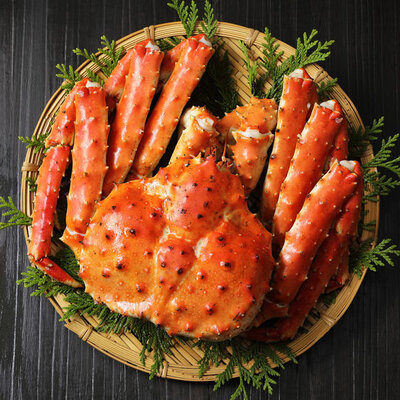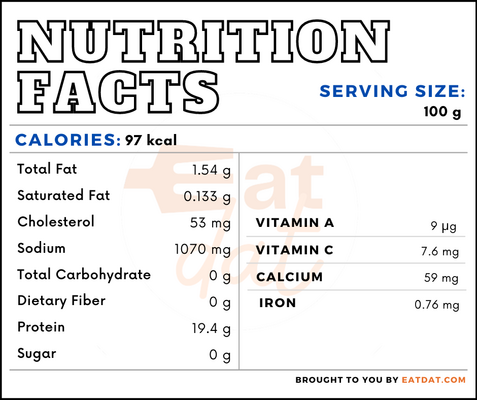
King Crab
What is King Crab?
King Crab is a type of seafood that belongs to the Lithodidae family of crustaceans. However, some academics classify the king crab as belonging to the Paguroidea family. These creatures are usually found in cold seas of the Pacific and Arctic oceans around the countries of Japan, Alaska in the US, Siberia in Russia, and British Columbia in Canada.
- There are about 40 different types of king crabs.
- Commonly served baked or boiled, this crustacean is often accompanied by potatoes, roast vegetables, or pasta.
The top 3 most commercially harvested varieties of this crustacean are:
- Red
- Blue
- Golden
Origin of king crabs
These crabs are found in cold waters, and have been considered a rare delicacy for generations. They are native to the seas of Okhotsk and Japan, the Bering Sea, and the northern Pacific Ocean. King crab was first commercially fished in the 1920s in Seldovia (USA). Post World War II, Japan entered crab fishing in a large way. The 1960s saw the introduction of this type of seafood into the Barents sea by Soviet scientists, giving Russia and Norway access to these crustaceans. Today, it is heavily farmed in Japan, Russia, Norway, Canada, and the USA.
Nutrition
This crustacean is low in calories but rich in proteins. It contains a host of micronutrients, including vitamins A and C, as well as B vitamins such as thiamin, riboflavin, niacin, vitamin B6, folate, and pantothenic acid. This crustacean is especially rich in vitamin B12. Also, it contains calcium, iron, magnesium, phosphorus, potassium, sodium, zinc, copper, and selenium. In addition, it is a rich source of omega 3 and omega 6 fatty acids.
A 100g of king crab has:

Commercial production
This crab is one of the most expensive types of seafood that is available. This is due to the dangerous and intemperate weather conditions for fishing this crustacean. Another reason for its high cost is that it may only be harvested during certain times of year. Furthermore, studies have been conducted in Norway exploring the complaints of many workers who reported developing asthma after harvesting this crustacean. Additionally, fishing of this crustacean is regulated and supervised by the State of Alaska.
This may be kept frozen for a period of up to 12 months. Once thawed, it must be consumed within 7 days and stored in the refrigerator.
King crab recipes
This seafood is moist and rich, providing a sweet taste. The crab legs and body have a firm and coarse texture, but their meat is mildly flaky. Here are a few popular recipes:
- Baked King Crab
- Crab Varenyky
- Crab Salad
- Crab Cakes
- Crab Bisque
- Steamed King Crab With Gewürztraminer Sauce
- Crab Kamameshi
- Crab Leg with Wasabi Gratin
- Wok Fried Crab
- Tenshinhan
- Crab Tempura
- Crab Okonomiyaki
- Crab Dynamite Roll
- South Indian Crab Curry
FDA regulations
King crab fishing requires a special permit, and fishing of red and blue varieties requires separate permits. These crustaceans can only be harvested during specified times of the year, and only male king crabs over 7 inches can be taken. These products are regulated by the Department of Fish and Game.
References
Hosomi, Ryota et al. “Seafood consumption and components for health.” Global journal of health science vol. 4,3 72-86. 28 Apr. 2012, doi:10.5539/gjhs.v4n3p72
https://www.ncbi.nlm.nih.gov/pmc/articles/PMC4776937/
Cliff White, First king crab fishery achieves MSC certification in Russia, Seafoodsource
https://www.seafoodsource.com/news/environment-sustainability/first-king-crab-fishery-achieves-msc-certification-in-russia
WWF. 2019. Case Study on Russian King Crab Sourcing and Traceability Pilot. Washington, D.C.
https://c402277.ssl.cf1.rackcdn.com/publications/1343/files/original/WWF_Russian_Crab_Case_Study_Final.pdf?1591297596
